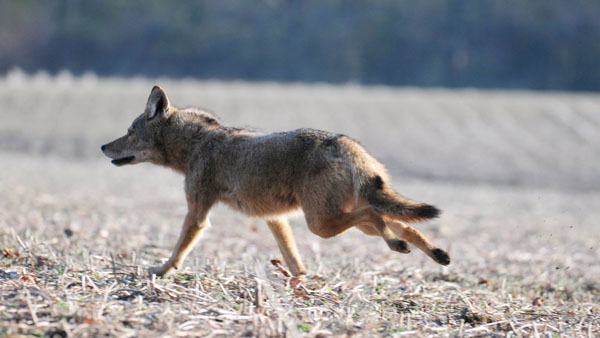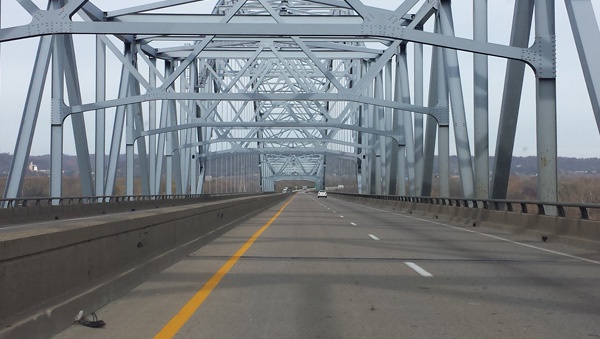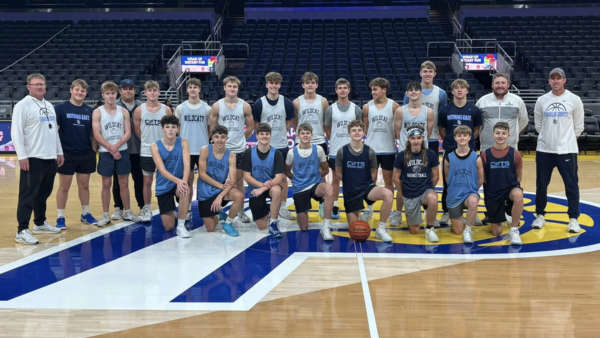Indiana Department of Natural Resources tells us that an increase in winter coyote sightings is no cause for alarm.

(Indianapolis, Ind.) - Coyote sightings are increasing around this time of year, and the Indiana Department of Natural Resources says that this is not uncommon or a cause for alarm.
With coyotes being common throughout the entire state, even in urban areas, the winter activity and bare vegetation increases your chances of catching a glimpse of these animals.
The young coyotes start leaving their parents to find a new home, which makes them more visible around this time.
Starting in January, coyotes will become even more active looking for mates to breed with.
Although you may be seeing more coyotes, this does not mean that they are increasing in number.
Coyotes enjoy eating animals and plants that are common around yards and homes, including rabbits, mice, fruit, and squirrels. This includes the abundant food that comes with human development, which means "where people are, coyotes follow."
Weighing between 20-30 pounds and appearing bigger than they actually are with their thick winter fur, this can cause concern when it comes to the safety of pets. To reduce the possibility of negative interaction between your pets and any wildlife, you should keep your pets leashed, in a kennel with a secure top, or indoors.
Although problems between coyotes and people are uncommon, you should follow these DNR tips for making your property less attractive to coyotes:
- Clean up fallen fruit from trees or gardens.
- Keep garbage secure.
- Make sure pet food and treats are not left outside.
- If you see a coyote around your yard, take down bird feeders; coyotes could be attracted to the rodents eating the seeds.
- Never intentionally feed a coyote, which could result in its losing its fear of people.
"Making a coyote feel unwelcome around people can help maintain its natural fear of humans, but never corner or chase a coyote – you should always allow it to have a clear escape path to get away from you," says the Department of Natural Resources.
If you come into contact with a coyote and want it to go away, try to make it "uncomfortable." The DNR suggests these actions:
- Yell.
- Wave your arms.
- Spray it with a hose.
- Throw tennis balls or small stones at it, but don’t throw anything that could be food, like apples.
- Carry a jar of coins to shake or a small air horn to make noise.
Even though keeping coyotes at a distance is important, these animals are members of Indiana's wildlife community which help control rodent populations and clean up carrion.

 UPDATE: All Westbound Lanes Reopen on Carroll Cropper Bridge
UPDATE: All Westbound Lanes Reopen on Carroll Cropper Bridge
 Survey Shows Majority of Hoosiers Favor Balanced Forest Management of Woodlands
Survey Shows Majority of Hoosiers Favor Balanced Forest Management of Woodlands
 SDCSC to Host Community Input Sessions Regarding Profile of a Graduate Plan
SDCSC to Host Community Input Sessions Regarding Profile of a Graduate Plan
 Gov. Braun's State of the State Address Set for January 14
Gov. Braun's State of the State Address Set for January 14
 Indiana Governor Announces Record Year for Indiana Tourism
Indiana Governor Announces Record Year for Indiana Tourism
 Rising Sun Regional Foundation Awards $255,900 in New Grants
Rising Sun Regional Foundation Awards $255,900 in New Grants













